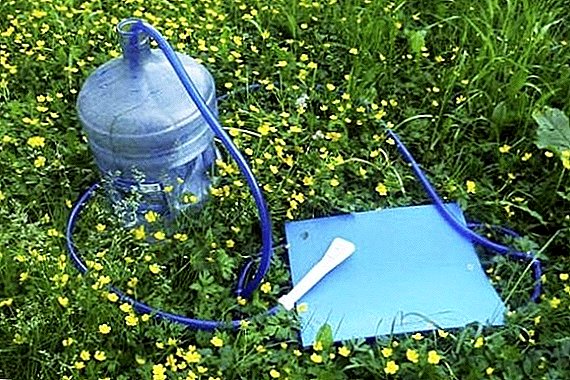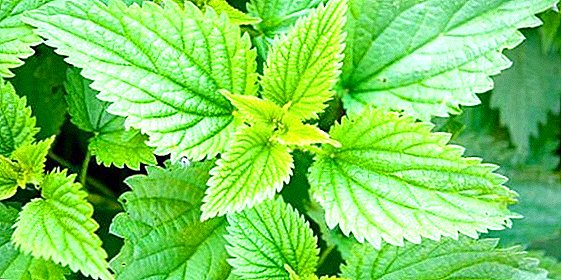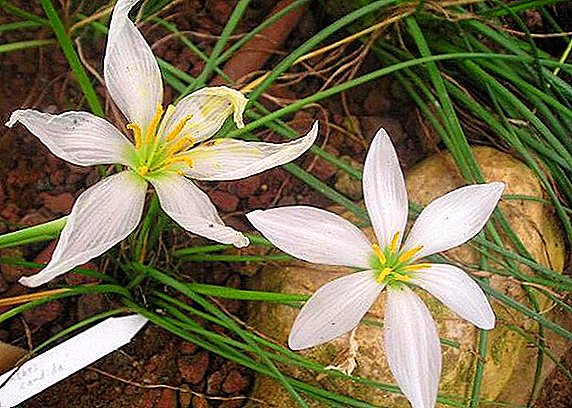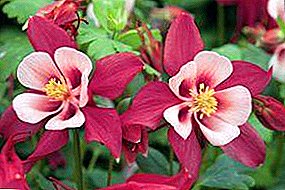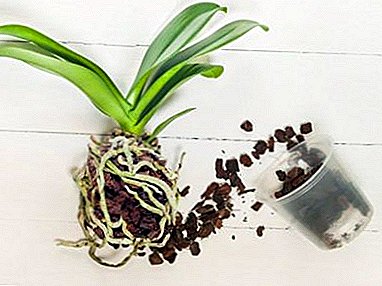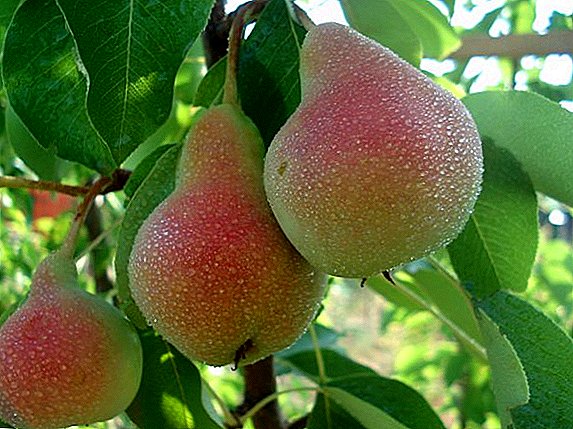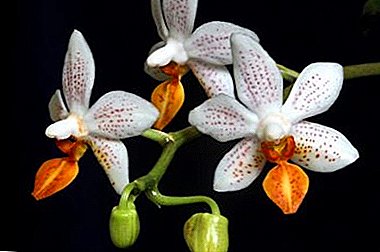
Orchids are insanely beautiful and delicate flowers that are loved by all novice and experienced flower growers. There are a lot of varieties of these exotic beauties and breeders are still trying to hang out all new specimens. The deduced grade Mini Mark differs in grace and refinement. Sunny, cozy flower takes a little space, fits perfectly into the interior of the house.
What kind of look like this?
Phalaenopsis Mini Mark - a hybrid variety of miniature orchid varieties bred in greenhouse conditions. The variety is compact, grows up to 20 cm in height. Leaf plate elongated, bright green. The leaves grow in length up to 10-15 cm. The flowers themselves are small, elegant, up to 3-4 cm in diameter. Petals variegated - white with small dotted inclusions. Specks can be different shades - yellow, pinkish, orange. The lip is bright orange, contrasting with the background of the petals.
Important: With proper care of the Mini Mark orchid at home, the bloom is long, lasting from autumn to mid-winter.
You can buy a variety only in specialized stores or order via the Internet.
We recommend to watch the video about the features of the appearance of the orchid Mini mark:
Biological description
Phalaenopsis Mini Mark belongs to a huge kind of epiphytes. It is a herbaceous plant of the Orchid family. Orchids - an ancient family that appeared many millions of years ago, belongs to the class of monocotyledonous plants.
Southeast Asia, Philippines, Australia is considered the birthplace of the flower. Like most epiphytes and lithophytes in nature, it grows in rocky areas, prefers moist plains, mountain forests, ravines and stones.
Orchid photo
Below are photos of Mini Mark Orchids.



History of
Phalaenopsis Mini Mark is a hybrid, the result of several crosses, bred at the end of the 20th century. The hybrid variety Mikro Nova was originally bred in 1980 by Henry Velbrunn. His followers - “Mini Mark”, “Luddemana” were obtained by crossing the original hybrid “Micro Nova” with the natural variety Phalaenopsis Mini Mark.
Orchid subsorts have gained wide popularity, received many awards. The brightest representatives are the clones Timothy Christopher, Kassandra, Brother Pico Polo, and others.
Are there subsorts?
This hybrid is widely used in home floriculture, a variety of this variety can be found in botanical gardens and greenhouses. The most common varieties can be considered: Mini Mark "Island", "Holm".
Miniature flowers do not have a pronounced flavor. Mini Mark "Maria Theresa" different refined floral light fragrance. Especially fragrant flower under the influence of sunlight. Mini Mark with flowers of peloric shape are distinguished by decorative irregularity of the petals themselves. The peculiarity is that the buds at the beginning of maturation have a yellow color, then become white.
Difference from others
Phalaenopsis Mini Mark different elongated leaves, variegated flowers. This variety consumes more light than its natural varieties. Also, the hybrid does not tolerate dry air, requires special care and hydration. Does not tolerate overdrying of the substrate, should be watered more often and more abundantly. Avoid sudden changes in night and daytime temperatures.
Home conditions
How to plant?
 Orchid Mini Mark at home requires careful care when planting. It is bred only by shoots of lateral shoots or "babies" formed on peduncles.
Orchid Mini Mark at home requires careful care when planting. It is bred only by shoots of lateral shoots or "babies" formed on peduncles.
Landing scheme:
- The side of the new shoot neatly separated from the mother flower.
- The shoot is transplanted into a container with moist bark for rooting.
- After 3 - 4 days, new roots appear.
- Peduncles grow after 2 - 3 months.
- With proper care at home, Mini Mark's orchids start to mature buds after 10 to 12 days.
Care
Light and place
Direct sun exposure should be avoided. The variety prefers bright, diffused light. Permissible remote lighting. Pots can be installed on any window, except the north side. In summer, light shading of the southern windows is required to avoid sunburn of the leaves..
From the strong sun on the leaves appear white, dry depressed spots. Leaves may turn black.
Air humidity
Optimum air humidity for the Mini Brand - at least 60 - 70%. With insufficient air moistening, the development and growth of the flower slows down. Flowering is problematic. Peduncles may not release buds. To increase humidity, place open containers with water next to the pots.
You can install pots on wet clay. So that the roots do not freeze, the pots are placed on the grate, and then on the wet surface of expanded clay or fine gravel.
In the autumn and winter, excessive moisture should be avoided. Regular airing of the room raw stagnant air is contraindicated by a thermophilic Mini Mark orchid.
Temperature
Mini Mark prefers a warm humid climate. The optimum daily air temperature is 18-25 ° C. Night temperature should be reduced by several degrees.
Watering
 Varieties planted in the moss, require frequent watering with minimal doses. Moss retains water well. Florists recommend watering the substrate with a tablespoon under the root so that water is evenly distributed over the surface of the substrate. In the summer you need to water every 2 to 3 days.
Varieties planted in the moss, require frequent watering with minimal doses. Moss retains water well. Florists recommend watering the substrate with a tablespoon under the root so that water is evenly distributed over the surface of the substrate. In the summer you need to water every 2 to 3 days.
It is possible to water by immersing the pot in a container with clean defended water. After watering, the water should drain completely, the excess water should be poured out of the pan. Stagnation of water provokes the appearance of pathogenic bacteria. It is also recommended spraying the flower 2 times a day in the summer. Spraying is best done in the early morning and after sunset.
Substratum between watering should dry out. Dry roots have a silvery shade. Bathing a flower under a hot shower is recommended.. Water temperature - up to 35 ° C. After a shower, you must remove the water from the sinuses of the flower and the growth point with a cotton swab. Stagnant water in the core is unacceptable.
Top dressing
Mini Mark requires regular mineral supplements every 10-14 days during the period of active growth. At rest in the home, an orchid privile care means feeding once a month to avoid depletion of the substrate. It is necessary to strictly observe the dosage and mode of fertilizing.
Fertilize can be through spraying. For this fertilizer diluted with water, according to the instructions. Commonly used complex special fertilizer for orchids.
Breeding
Hybrid orchid varieties at home with proper care multiply only by division. Sowing seeds is possible in greenhouse conditions.
Scions - children appear with sufficient air humidification, not less than 75% and air temperature not less than 25 - 27 ° C.
Transfer
 Replant the plant should be every 2 - 3 years, when the roots have grown strongly, the pot has become small. Also a transplant is desirable immediately after buying a flower. Temporary tanks and soil composition are not suitable for the permanent "place of residence" Mini Mark.
Replant the plant should be every 2 - 3 years, when the roots have grown strongly, the pot has become small. Also a transplant is desirable immediately after buying a flower. Temporary tanks and soil composition are not suitable for the permanent "place of residence" Mini Mark.
Soil mix for transplanting:
- Pine bark - 1 hour
- Coconut Chips - 1 hour
- Moss sphagnum - 2 h.
Tanks must be transparent to view the roots. The diameter of the pot should be selected by the volume of the root system. For adult flowers the diameter of the tank is 12-14 cm. Drainage holes should be made across the entire surface of the pot and at the bottom. The root system develops only with good ventilation. Before planting, the pot is well washed out, treated with disinfectants.
Transplant procedure:
- The flower is carefully removed from the pot.
- The root is cleared from the old, damaged dry shoots.
- Places cuts sprinkled with charcoal.
- The roots are dried before planting 3 - 4 hours.
- The flower is immersed in a pot, filled with ready-made substrate.
- The substrate is not compacted.
- The seedling is well moistened.
Board: The adaptation period can pass painfully. A few days the flower looks drooping. Mini Mark, growing on a moss bed, it is better to replant each year. Transplantation is carried out in the spring or immediately after flowering.
We recommend to watch a video about orchid transplantation Mini mark:
Features
- Before flowering. If the bloom is delayed, the plant requires additional stimulation. The flower should be put in a cooler place with an air temperature of 15 - 16 ° C. Also should increase the humidity. Without optimization of the maintenance conditions, flowering is problematic, the variety may start to degenerate.
- Bloom. Variety Mini Mark can produce flower stalks at any time of the year. Flowering most often occurs in the period from late autumn to early spring. For flowering requires a temperature difference of at least 3 - 4 ° C. Watering frequent.
- After flowering. Immediately after flowering, the flower is removed completely. During this period, you can transplant an adult flower. Top dressing moderate.
Diseases and pests
Mini Mark is sensitive to any disturbance of temperature and humidity. Orchid with improper care at home is prone to diseases, fungal viruses.
Possible diseases and difficulties:
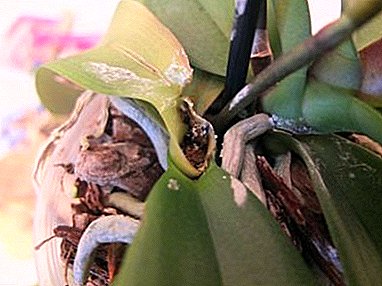 Root and stem rot appear from excessive irrigation, stagnation of water in the pan, substrate dampness. The root becomes slimy, dark, acquires a brown tint. Leaves lose shine and elasticity. Requires urgent transplantation, replacement of infected substrate, sanitary pruning of damaged fragments. The treatment of the flower with foundationolite is necessary.
Root and stem rot appear from excessive irrigation, stagnation of water in the pan, substrate dampness. The root becomes slimy, dark, acquires a brown tint. Leaves lose shine and elasticity. Requires urgent transplantation, replacement of infected substrate, sanitary pruning of damaged fragments. The treatment of the flower with foundationolite is necessary.- From an oversupply of watering and too bright light the leaves turn yellow. It is necessary to weaken watering, pots are rearranged to a darkened place.
- Overexposure of the substrate and insufficient air humidity leaves fall. It should moisten the soil, increase the humidity of the air through spraying. Need pritenit place of the flower.
- The leaves and the growing point are blackened - viral rot. Treatment with insecticides is required. With a strong defeat should be transplanted flower.
- From the spider mite, the flower should be treated with phytoverm. A hot shower will also help.
- From the shitovki and mealybug of the flower will save spraying karbofos. Prevention is carried out 2 to 3 times with an interval of 6 to 7 days.
- The appearance of slugs. Disinfection of the pot and substrate treatment with foundation are required.
We recommend to watch a video about diseases and pests of orchids:
Is it possible to keep outdoors?
Keeping a flower outdoors is not recommended.. Exot is not grown in our climatic conditions in the open field.
Conclusion
Phalaenopsis Mini Mark requires special care, constant attention. Adhering to simple rules, maintaining the desired temperature and humidity, you can expect a gentle bloom of a tropical flower.


 Root and stem rot appear from excessive irrigation, stagnation of water in the pan, substrate dampness. The root becomes slimy, dark, acquires a brown tint. Leaves lose shine and elasticity. Requires urgent transplantation, replacement of infected substrate, sanitary pruning of damaged fragments. The treatment of the flower with foundationolite is necessary.
Root and stem rot appear from excessive irrigation, stagnation of water in the pan, substrate dampness. The root becomes slimy, dark, acquires a brown tint. Leaves lose shine and elasticity. Requires urgent transplantation, replacement of infected substrate, sanitary pruning of damaged fragments. The treatment of the flower with foundationolite is necessary.